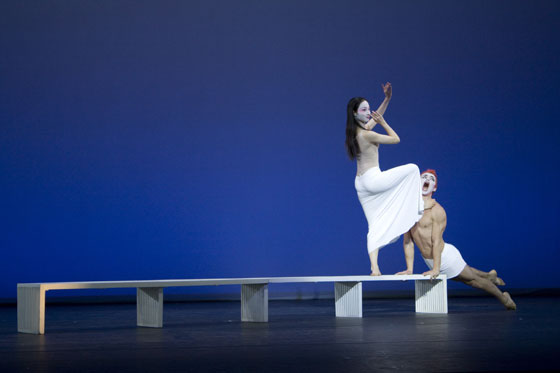
Xiaochuan Xie and Tadej Brdnik. Photo credit: Sinru Ku
What can a fine art critic say about dance? I’m not going to pretend I have much valuable to say about the craft itself — I know very little about the field — but from the perspective of someone who “looks” for a livingI was not without words for Robert Wilson’s Snow on the Mesa.
The opening night performance by The Martha Graham Dance company kicked off a week long look at the work of the choreographer and dancer Martha Graham (1894-1991) at The Rose Theater, Wilson’s work a portrait of the great artist. So what did I take home about Graham just from watching? A few notes from the performance, fleshed out from their original form.

Jacquelyn Elder, Miki Orihara and Mariya Dashkina-Maddox. Photo credit: Sinru Ku
The set is the most Robert Wilson-y of Robert Wilson sets. A plain back lit scrim backed the performance with only a few props on the stage. Wilson hasn’t produced anything too unexpected for this show, but that’s fine. I liked that the set is designed to make even the smallest of movements visible, which made me more interested in the body. This effect however was squandered with the vacuous clown-like expressions frozen on dancers at the end of many scenes. How is it one director can command so much nuanced expression in one moment, and then offer only a caricature the next?

Miki Orihara, Mariya Daskina-Maddox and Blakeley White-McGuire. Photo credit: Sinru Ku
The performance lasts an hour, the musical score often little more than wind and howling. According the playbill the 12 scenes connect the American images that informed her work — the southwest desert, aboriginal culture, courtship — to her now iconic gestures.
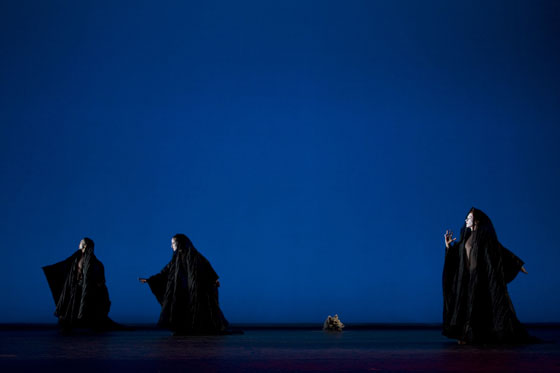
Miki Orihara, Mariya Daskina-Maddox and Blakeley White-McGuire. Photo credit: Sinru Ku
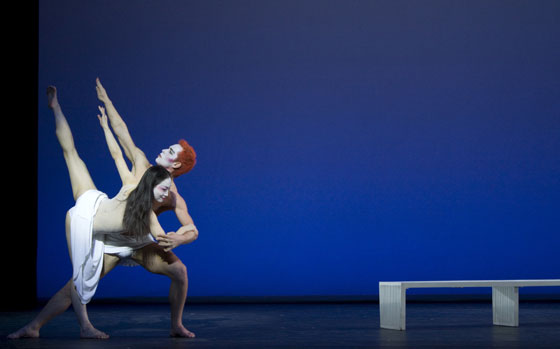
Xiaochuan Xie and Tadej Brdnik. Photo credit: Sinru Ku
Xiaochuan Xie is new to the company, and for me more compelling than principles like Carrie Ellmore-Tallitsch. She was the only dancer who could carry the bold expressions demanded by Wilson.
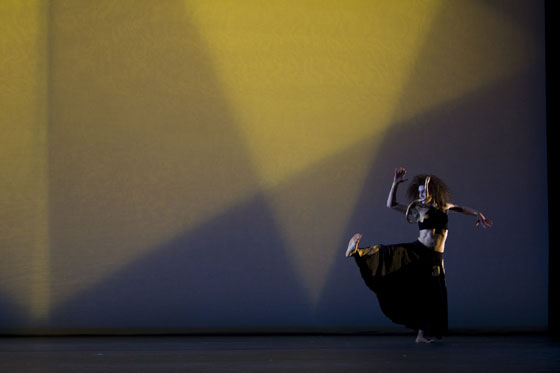
Carrie Ellmore-Tallitsch. Photo credit: Sinru Ku
Definitely not my favorite scene. Navaho Rug was full of needless repetition and painted a cliche picture of aboriginal dancing. Also, the minimalist triangle forms on the scrims were awful: an ill-conceived Ellsworth Kelly meets Robert Irwin.
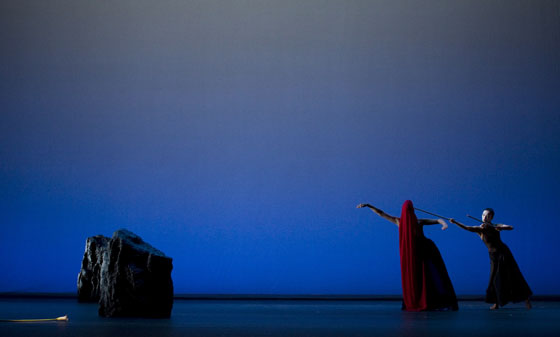
Jacquelyn Elder and Miki Orihara. Photo credit: Sinru Ku
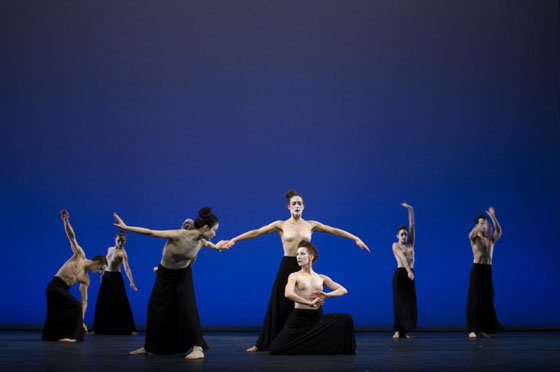
Oliver Tobin, Mariya Daskina-Maddox, Benjamin Schultz, Xiaochuan Xie, Carrie Ellmore-Tallitsch, Blakeley White-McGuire, Jacquelyn Bulnes and Hanan Misko. Photo credit: Sinru Ku
Unfortunately no press image exists for Night in the Desert, which was undoubtedly my favorite scene if just for the lighting. As in other scenes, the dancers hold space as though it were an object. This is probably a fairly common technique used to contort the body, but works (and is almost wholly absent in the night’s following performance Maple Leaf Rag).
The scrim was removed for this piece, the dancers moving in lighting that resembled moonlight. It was beautiful, and an important change to a set that might have otherwise suffered from sameness.
Related: My favorite critic, ALASTAIR MACAULAY at The Times discusses the performance.


{ 3 comments }
ok
Thats really admirable.. 🙂
The show looks very dramatic in the pictures. I especially love the third shot.
Comments on this entry are closed.
{ 3 trackbacks }